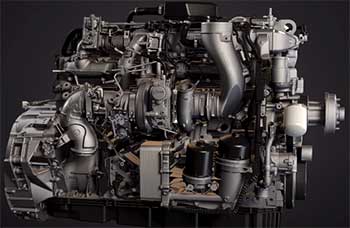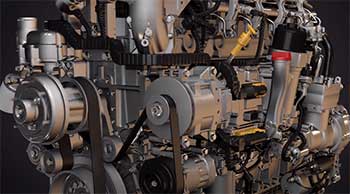The Paccar MX 13 engine has emerged as a reliable and efficient power source in the heavy-duty trucking industry. However, like any machine, it’s not devoid of its share of issues.
One aspect that’s come under scrutiny is the regeneration (Regen) system. This article will walk you through some of the common problems with the Paccar MX 13 Regen, what they mean, and how to troubleshoot them.
Problems with Paccar MX 13 Regen
- Incomplete Regeneration Cycles

One of the most frequent problems with the Paccar MX 13 Regen is incomplete regeneration cycles.
This can happen if a driver does not allow the process to complete, resulting in soot build-up in the Diesel Particulate Filter (DPF).
Over time, this can cause severe performance issues and can even lead to the engine shutting down entirely.
- EGR Valve Failure
Exhaust Gas Recirculation (EGR) valve failure is another common issue. This valve, which controls the flow of exhaust gases back into the engine for combustion, can become stuck due to soot or carbon build-up.
If it fails, the Regen process can’t occur, causing a rise in NOx emissions and potential engine damage.
- Faulty Fuel Injector
A faulty fuel injector can disrupt the Regen process. The injector’s role in injecting fuel into the exhaust stream to increase temperature for DPF burning is critical.
If the injector is leaking or not functioning correctly, it won’t create the required temperatures, leading to incomplete regeneration and potential engine damage.
- Exhaust Backpressure Sensor Failure
The exhaust backpressure sensor helps monitor the DPF’s pressure level during regeneration. A malfunctioning sensor could result in incorrect readings, potentially leading to premature or overextended regen cycles.
This issue can result in inefficient fuel consumption and increased engine wear.
- DPF Cracking
Over time, thermal cycling (heating and cooling cycles) can lead to cracks in the DPF. This damage is not immediately noticeable, but as the cracks grow, the DPF becomes less effective, leading to incomplete regens and a decrease in overall engine performance.
Why I Would Still Recommend the Paccar MX 13 Regen?
Despite the issues outlined above, I would still recommend the Paccar MX 13 engine, and here’s why:
- Solid Engineering

The Paccar MX 13 engine’s design and engineering is a testament to Paccar’s dedication to quality.
Its robust construction ensures a long life cycle and fewer mechanical failures relative to some other engines in its class.
- Fuel Efficiency
One of the major selling points of the MX 13 is its superior fuel efficiency. This engine boasts excellent miles per gallon ratings, which can result in significant cost savings for fleet operators over the long run.
- Power and Performance
Despite its fuel efficiency, the MX 13 doesn’t skimp on power. This engine offers horsepower ratings from 380 to 500 hp, providing plenty of torque for hauling heavy loads over long distances.
- Emission Control
Paccar’s advanced emissions solutions, including the regen system, meet or exceed global emissions standards. While the regen system can have issues, when functioning correctly, it helps maintain the engine’s performance while reducing its environmental impact.
- Service and Support
Paccar offers excellent service and support to its customers. The company has a widespread network of dealerships and service centers, ensuring help is readily available when needed.
While it’s true that the Paccar MX 13 Regen system can present certain challenges, the overall quality, performance, and support provided by Paccar make the MX 13 a worthwhile investment for many fleet operators.
Like any complex machine, it requires proper maintenance and attention, but with the right care, the MX 13 can deliver impressive performance and reliability.
Frequently Asked Questions (FAQ)
To initiate a forced regen, you’ll need Paccar’s diagnostic software. With the engine at operating temperature, follow the software prompts for a manual regen. It’s crucial to let the process finish completely for a successful regeneration.
If regen doesn’t work, it leads to soot accumulation in the DPF. Over time, the DPF can become clogged, causing significant performance issues and even engine shutdown. It’s recommended to have the issue diagnosed and rectified as soon as possible.
If the regen doesn’t stop, it’s likely due to a sensor malfunction or software issue. This could cause excessive fuel consumption, and extended high-temperature conditions could harm engine components. Immediate professional help is advised.
A regen cycle on a Paccar engine can take between 20 to 40 minutes, depending on the engine’s operation condition and the amount of soot in the DPF.
Conclusion
While the Paccar MX 13 is a robust and efficient engine, its Regen system can present issues. Early detection and swift action are crucial to prevent further damage and expensive repairs.
Regular maintenance, careful monitoring of the regen process, and using professional diagnostic tools are essential practices to keep the engine running smoothly.
Remember, every problem has a solution. So, keep these potential issues in

